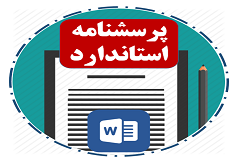%40تخفیف
امتیاز 0 از 5 از 0 دیدگاه
35,000 تومان قیمت اصلی 35,000 تومان بود.21,000 تومانقیمت فعلی 21,000 تومان است.
- تاریخ ایجاد دی 4, 1399
- تاریخ بروزرسانی اسفند 13, 1401
- فروش 0
- دیدگاه 0
شرایط استفاده از محصول
تمام محصولات به ازای پرداخت پروژه تنها قابل استفاده می باشند. این بدین معنی است که برای استفاده از یک یا چند محصول ، لازم به خرید آن محصول است.
مزایای خرید این محصول:
- دسترسی به فایل به صورت همیشگی
- پشتیبانی رایگان
- پشتیبانی 24 ساعته محصول
- بازگشت وجه در صورت عدم رضایت مشتری



